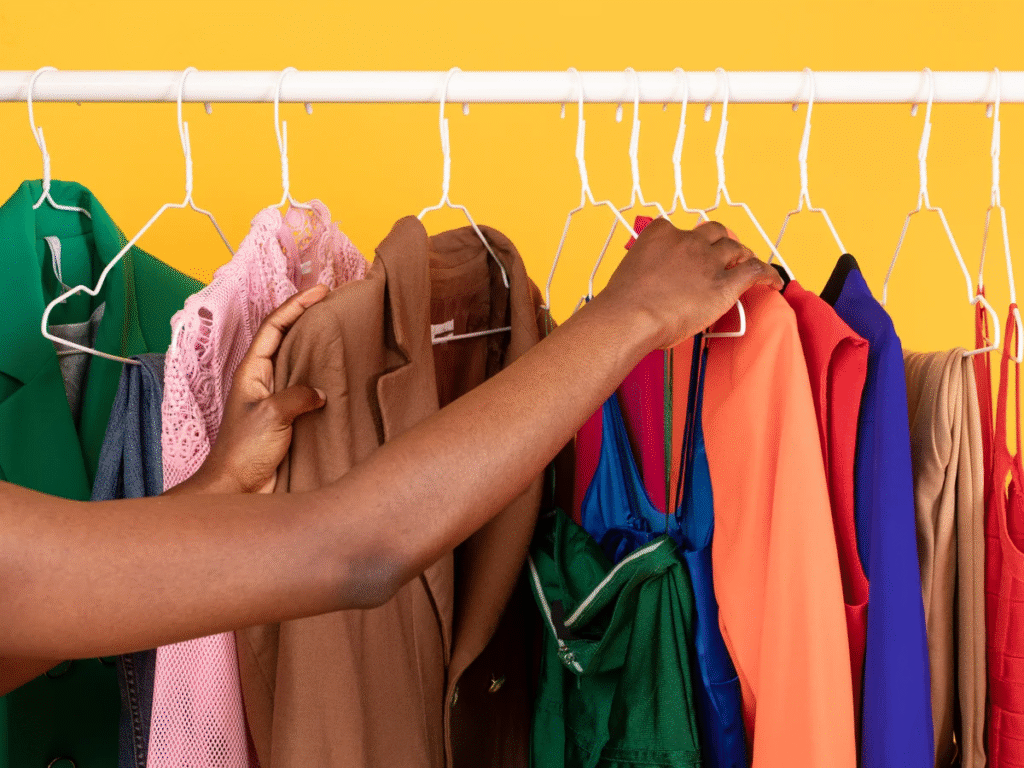The luxury industry in America is not the same anymore. With China standing up for their work, things are going to change.
But what are we learning from this? Are we moving towards more sustainable choices and trying to shop with purpose?
For some people, it might just be a power move. We can’t be sure until the dust settles. However, one thing we can be sure about is that people might start thinking about eco-friendly clothing.
Most people have shifted to recycled material, making a big change in the fashion world. For example, plastic bottles are now being made with eco-friendly materials. Most of the brands are also using recycled plastic to make their clothes and accessories, showing that fashion can be stylish and good for the environment.
But can it be beneficial? If YES, then how? Let’s talk about it in detail in this article.
How are eco-friendly clothing choices beneficial for the general public?

Even small changes in consumer behavior can lead to a major impact over time. So, here are some of the benefits you might be able to see in the future.
- A Better Future for Fashion
Recycling is a good start, but it’s not enough. Change in fashion means switching to a system that reuses materials and creates less waste from the beginning.
Brands need to know where their materials come from, how they are made, and how eco-friendly the recycling process is. It is not just about used fibers, it is also about how much water and energy the process saves.
Working with transparent, eco-friendly suppliers is key. Closed-loop systems like Refibra, which turn old fabric into new Tencel fibers, can cut waste and pollution.
In simple words, fashion needs trends. It wants long-term, responsible choices that help both people and the planet.
- Slow Fashion and Simple Style
More people are saying no to fast fashion and yes to slow fashion and minimalism. Slow fashion encourages consumers to invest in fewer, higher-quality pieces that are timeless and durable.
A popular part of this trend is athleisure—comfy clothes that you can wear at home, to the gym, or even outside. As more people work from home and care more about health and comfort, these styles are becoming a favorite.
With comfort and easy living in focus, simple and smart clothing is here to stay.
Closing the loop in fashion means designing clothes that can be recycled and reused, keeping materials in use instead of letting them go to waste. This is also known as “Circular Design”. The approach is used by some of teh famous brands like Stella McCartney.
It plays a big role here. It’s about creating garments that can be easily repaired, recycled, or disassembled. Throughout the entire life of a product, brands can choose materials that can be reused without losing quality.
Ways to close the loop in fashion include:
- Modular clothing: Clothes that can be easily repaired or customized by changing parts.
- Rentals and resale: Sharing or reselling clothes to reduce the need for new ones.
- Mono-material design: Using one material to make recycling easier.
- Digital Fashion

Digital fashion is a new way to enjoy fashion without harming the environment. Brands can create virtual clothes using 3D design and augmented reality, allowing people to “wear” outfits online instead of making physical clothes. This helps reduce waste and the need for manufacturing.
This focuses on creating sustainable, real materials, but also sees how digital fashion can support eco-friendly choices. As the online and real worlds blend, digital fashion will become an important part of the future of fashion.
Here are some examples of digital fashion:
- Virtual fashion shows
- Digital clothing
- Virtual try-ons
By minimizing physical production, digital fashion reduces emissions and the need for raw materials.
Instead of using man-made fabrics that take hundreds of years to break down, scientists are now making clothes from natural things like algae, mushrooms, and farm waste. These materials break down on their own over time and leave very little waste behind. Some of them are even stronger and more comfortable than regular fabrics.
This change is good for the planet and shows how fashion can be both smart and kind to nature.
Conclusion
Recycled fashion is not only about using plastic bottles anymore. It is also about thinking in a bigger, smarter way, like using new eco-friendly materials, giving old clothes a fresh purpose, and using the latest technology to help. As the fashion world changes, we will see more creative and useful ways to turn waste into something more valuable.
Sustainable fashion is both smart and stylish. As consumers, supporting eco-conscious brands and making informed choices can drive meaningful change in the industry.


